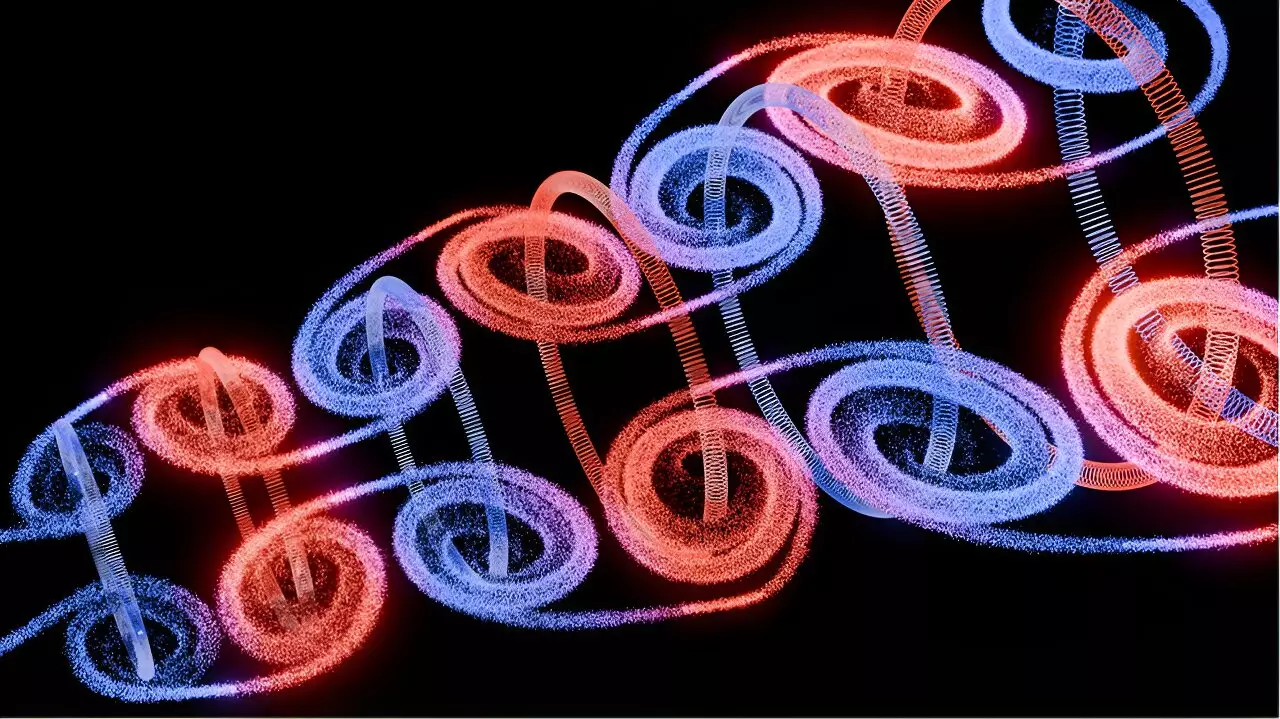A recent study published in Nature Communications by physicists from Singapore and the UK unveiled an intriguing optical analog of the Kármán vortex street (KVS). Led by Yijie Shen from Nanyang Technological University, the researchers introduced a new type of light pulse that mimics the swirling vortices observed in fluid dynamics. This optical KVS pulse not only sheds light on the intricate relationship between fluid transport and energy flow but also opens up a realm of possibilities in light manipulation.
Unlike previous studies on optical skyrmionic beams, the skyrmionic field configuration in nondiffracting supertoroidal pulses (NDSTPs) overcomes diffraction limitations and remains stable over long distances. This breakthrough in the field of optics paves the way for applications in light-matter interactions, super resolution microscopy, and metrology. Skyrmions, originally conceptualized as topological particles by Tony Skyrme in 1962, exhibit magnetic vortex-like behavior on a nanoscale level. The persistence of skyrmionic field structures in the KVS pulse propagation offers a novel platform for studying electromagnetic dynamics and potential applications in information transfer.
The deeply subwavelength singularities of the optical pulses present unique opportunities for metrology and spectroscopy, particularly in the study of toroidal excitations in matter. The encoded topological features of the pulses hold promise for long-distance information transfer, with potential applications in telecommunications, remote sensing, and LiDAR. By drawing parallels between the KVS in fluid flows and the behavior of the optical pulse, researchers anticipate novel insights into electron motion and pulse propagation in nonlinear media.
The historical significance of the Kármán vortex street is not only rooted in its fundamental principles of fluid dynamics but also in its artistic representations. Inspired by a painting at the Church of St Dominic in Bologne, Italy, Theodore von Kármán’s research on vortex streets led to groundbreaking discoveries in the field. The intersection of science and art, exemplified by the depiction of vortices in classical paintings, highlights the deep-rooted connection between creativity and scientific inquiry.
The catastrophic collapse of the Tacoma Narrow Bridge in 1940 due to vortex streets serves as a poignant reminder of the immense power and beauty of fluid dynamics. The bridge’s design flaws caused vibrations and resonance, leading to its eventual destruction. This historic event marked a pivotal moment in recognizing the significance of structured flow patterns like the KVS and their impact on engineering and design.
The discovery of the optical analog of the Kármán vortex street represents a significant advancement in the field of optics, bridging the gap between fluid dynamics and light manipulation. The potential applications of NDSTPs in various fields, from metrology to information transfer, underscore the importance of interdisciplinary research in pushing the boundaries of scientific exploration. By understanding the parallels between natural phenomena and structured light, researchers can unlock new avenues for innovation and discovery in the realm of optics.


Leave a Reply